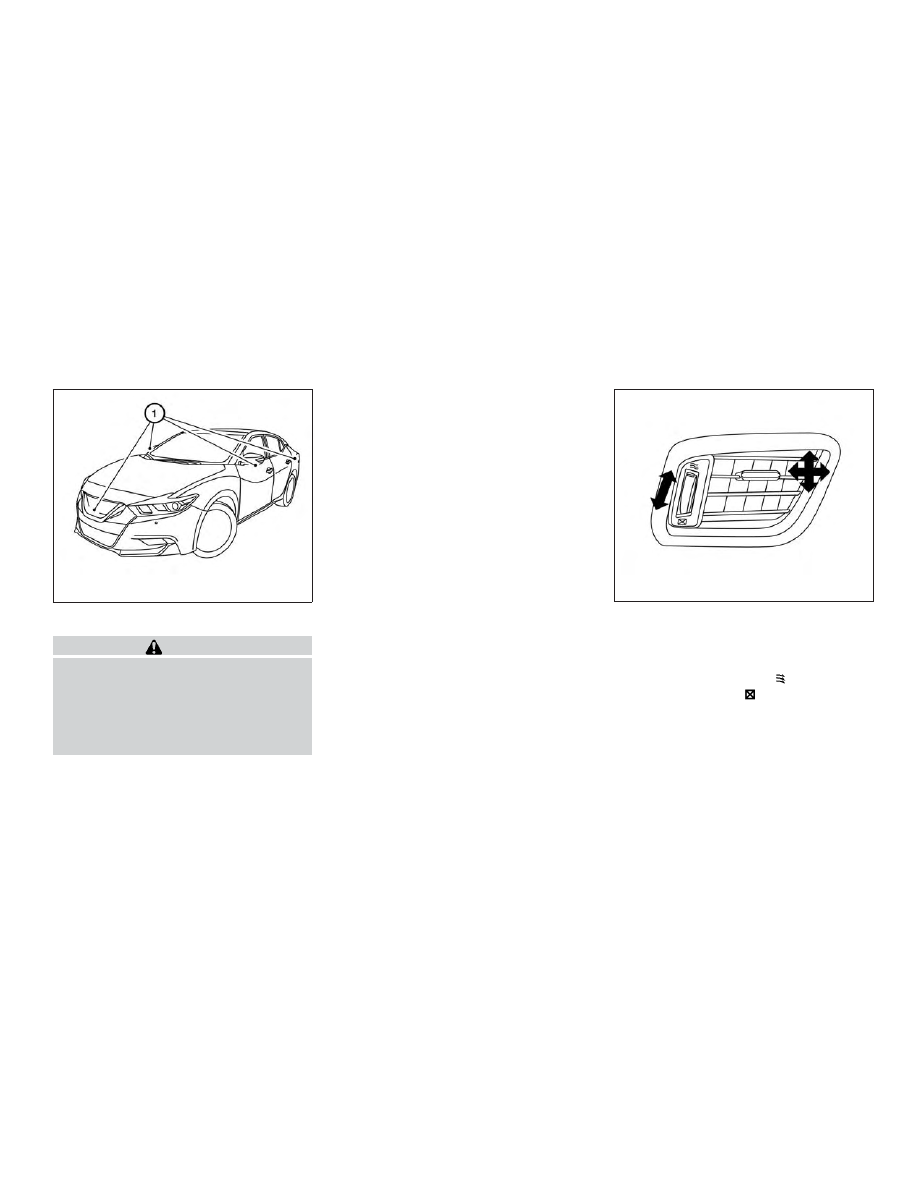Nissan Maxima (2018 year). Instruction - part 14

SYSTEM MAINTENANCE
CAUTION
∙ Do not use alcohol, benzine or thinner
to clean the camera. This will cause
discoloration.
∙ Do not damage the camera as the
monitor screen may be adversely
affected.
If dirt, rain or snow accumulates on any of
the cameras
䊊
1
, the MOD system may not
operate properly. Clean the camera by wip-
ing with a cloth dampened with a diluted
mild cleaning agent and then wiping with a
dry cloth.
Adjust air flow direction by moving the vent
slides.
Open or close the vents by using the dial.
Move the dial toward the
to open the
vents or toward the
to close them.
LHA3587
Side
LHA3577
VENTS
Monitor, climate, audio, phone and voice recognition systems
4-27